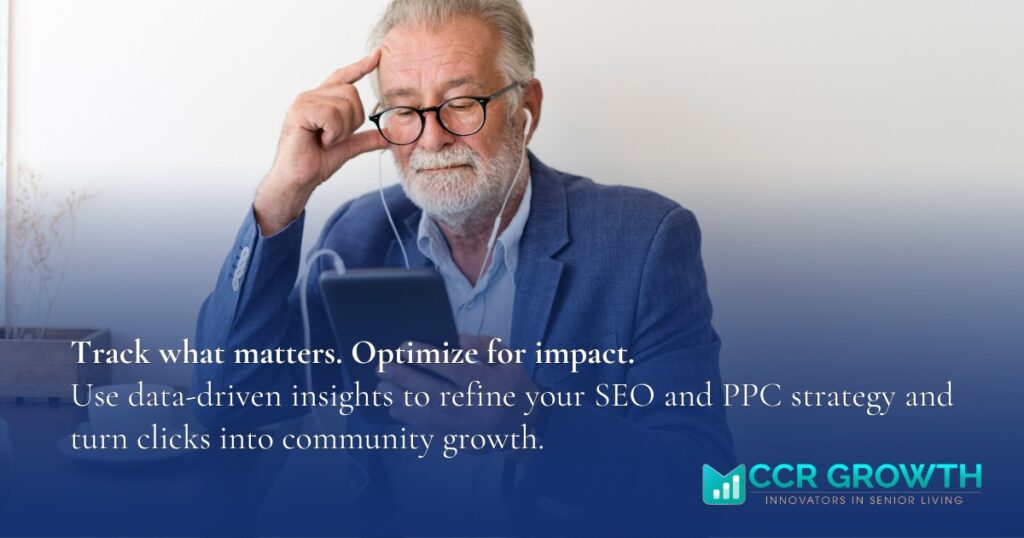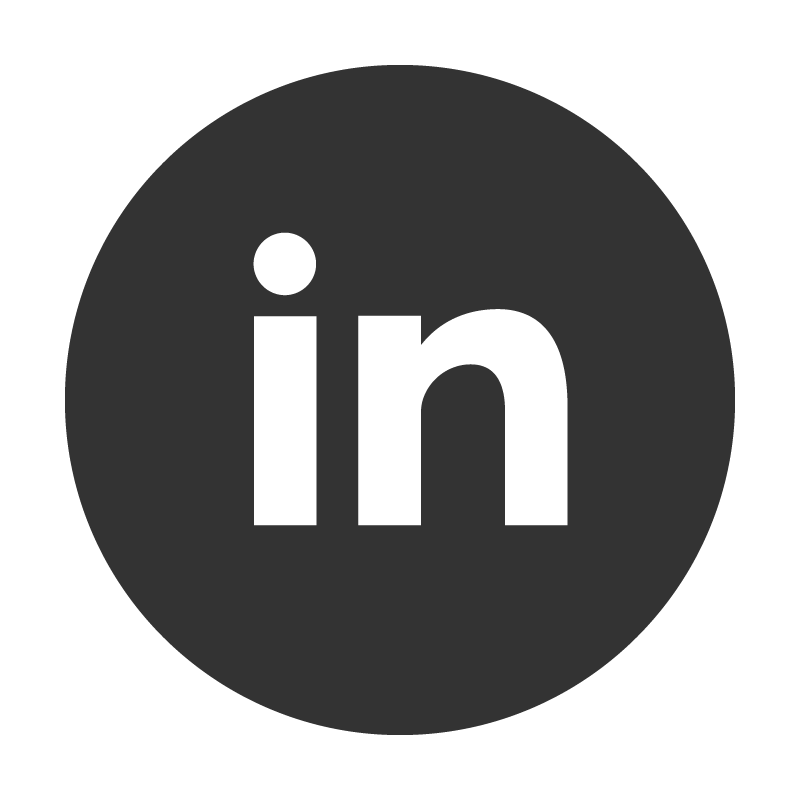
CCR Growth
Senior Living SEO vs. PPC: Which Drives More Leads?
The senior living industry demands precision in reaching potential residents and their families. As marketing directors or community operators, you navigate a digital landscape where visibility on search engines defines success. At CCR Growth, our 20 years of expertise in the senior living sector reveal a clear truth: a robust digital marketing strategy hinges on leveraging both search engine optimization and pay-per-click advertising. The debate of senior living SEO vs. PPC misses the point; each serves a unique purpose, and together, they drive qualified leads to senior living communities, assisted living facilities, and retirement communities. Let’s take a closer look at the technical intricacies of these approaches and how their integration transforms your senior living marketing efforts into an engine for consistent lead growth.

The Foundation of Search Engine Optimization
Search engine optimization (SEO) anchors your online presence. Senior living websites optimized with targeted keywords, technical enhancements, and quality content climb search engine results pages, capturing organic traffic. Keyword research identifies terms like “senior living services” or “assisted living communities” that resonate with adult children or older adults seeking senior care. Local SEO ensures your senior living facility appears in searches such as “senior community near me,” connecting you with nearby prospects.
SEO demands mobile optimization and fast-loading pages to enhance user experience, signaling relevance to search engines. Content marketing, such as blog posts about senior living options, engages website visitors and builds trust. Unlike paid advertising, SEO delivers cost-effective results over time, positioning your community as a trusted authority in senior care. The challenge lies in its gradual nature; achieving top SEO rankings requires months of consistent effort. This is where PPC campaigns offer immediate impact, complementing your long-term strategy.
The Immediate Impact of PPC Advertising
Pay-per-click (PPC) advertising through platforms like Google Ads delivers instant visibility. PPC ads appear at the top of search results, driving immediate traffic to your senior living website. This speed suits time-sensitive promotions or targeting specific demographics, such as adult children researching assisted living centers. PPC marketing allows precise control over ad campaigns, with ad groups tailored to specific keywords like “senior living facility” or “senior care services.”
Creating persuasive ad copy and fine-tuning landing pages for conversion ensures clicks turn into qualified leads. PPC strategies can target local searches, aligning with your senior living space’s geographic focus. Google Analytics provides real-time data to refine PPC cost and performance, maximizing return on investment. The trade-off is ongoing investment; pausing a PPC campaign halts traffic, unlike SEO’s sustained organic search benefits. Together, these approaches address different stages of the sales funnel.
Distinct Strengths of SEO and PPC
SEO and PPC serve complementary roles in senior living marketing. SEO builds a sustainable foundation, boosting visibility for terms like “retirement communities in California” through local SEO and content marketing. Appearing organically in search engine results builds trust among residents and their families. The process requires technical expertise and patience to maintain rankings.
PPC advertising, conversely, excels in precision and speed. Senior living PPC campaigns target audiences by location or interests, using paid search or display advertising on social media platforms. This immediacy captures prospects at the top of the sales funnel. The challenge lies in managing costs; without strategic oversight, PPC expenses can outpace returns. A balanced digital marketing strategy combines both to optimize lead generation.
Integrating SEO and PPC for Maximum Results
A combined approach amplifies your marketing efforts. Consider a senior living provider launching a new assisted living facility. A PPC campaign targets “assisted living communities” in local searches, driving traffic to a conversion-optimized landing page. Simultaneously, SEO efforts elevate the website’s ranking for “senior living options,” capturing organic traffic as the campaign matures. This dual strategy ensures visibility across search engine results pages, from paid ads to organic listings.
Integration enhances efficiency. PPC data informs keyword research for SEO, identifying high-performing terms like “senior care services.” SEO insights, such as popular content topics, refine PPC ad copy to engage website visitors. Google Analytics tracks metrics like click-through rates and time on page, enabling data-driven adjustments. This synergy nurtures potential residents through the sales funnel, from awareness to decision-making, building brand awareness in the senior living sector.
Tracking and Optimizing Performance
Measuring success is critical to refining your approach. Google Analytics monitors organic traffic, keyword rankings, and conversion rates for SEO, while PPC metrics like cost-per-click and return on ad spend gauge ad performance. Regular analysis ensures your marketing strategy adapts to shifts in the senior living industry, such as evolving search engine algorithms or consumer preferences. Continuous optimization maximizes the impact of both SEO and PPC.

Data-driven insights empower senior living marketers to make informed decisions that drive better outcomes. Identifying high-performing keywords, analyzing user behavior on landing pages, and tracking lead attribution across channels enables you to fine-tune campaigns for greater efficiency. A/B testing ad creatives and monitoring engagement metrics help uncover what resonates most with prospective residents and their families. This iterative approach ensures your digital marketing efforts remain aligned with both community goals and industry trends.
The Combined Power of SEO and PPC
The senior living space requires a dynamic approach to stay competitive. SEO establishes a trusted, organic presence, driving traffic through relevant keywords and local searches. PPC delivers immediate visibility, targeting specific audiences with precision. Together, they create a comprehensive digital advertising strategy that outperforms either method alone.
At CCR Growth, we’ve supported senior living clients in reducing their reliance on costly referrals and in connecting directly with potential residents. Our expertise in digital marketing transforms lead generation, ensuring your senior living community thrives. Embracing both SEO and PPC positions your brand to dominate search results, engage residents and their families, and build a sustainable future in the senior living industry. Ready to elevate your digital strategy? Contact us today to schedule a consultation and discover how we can help your community grow.
Subscribe to our newsletter
Sharpen your expertise and stay ahead of senior living industry trends—subscribe to CCR Growth’s newsletter for exclusive insights and updates.
Recent Posts


What is Nursing Home SEO: Benefits, Drawbacks, and Strategies

Build Your Brand from the Inside Out: A Senior Living Team Guide
Redefining Senior Living Marketing, Sales, and Operations
CONTACT ADDRESS
8710 Carmel Valley Road, Carmel, CA 93923
GENERAL INQUIRIES
info@ccrgrowth.com
(831) 273-3628
SOCIAL MEDIA




